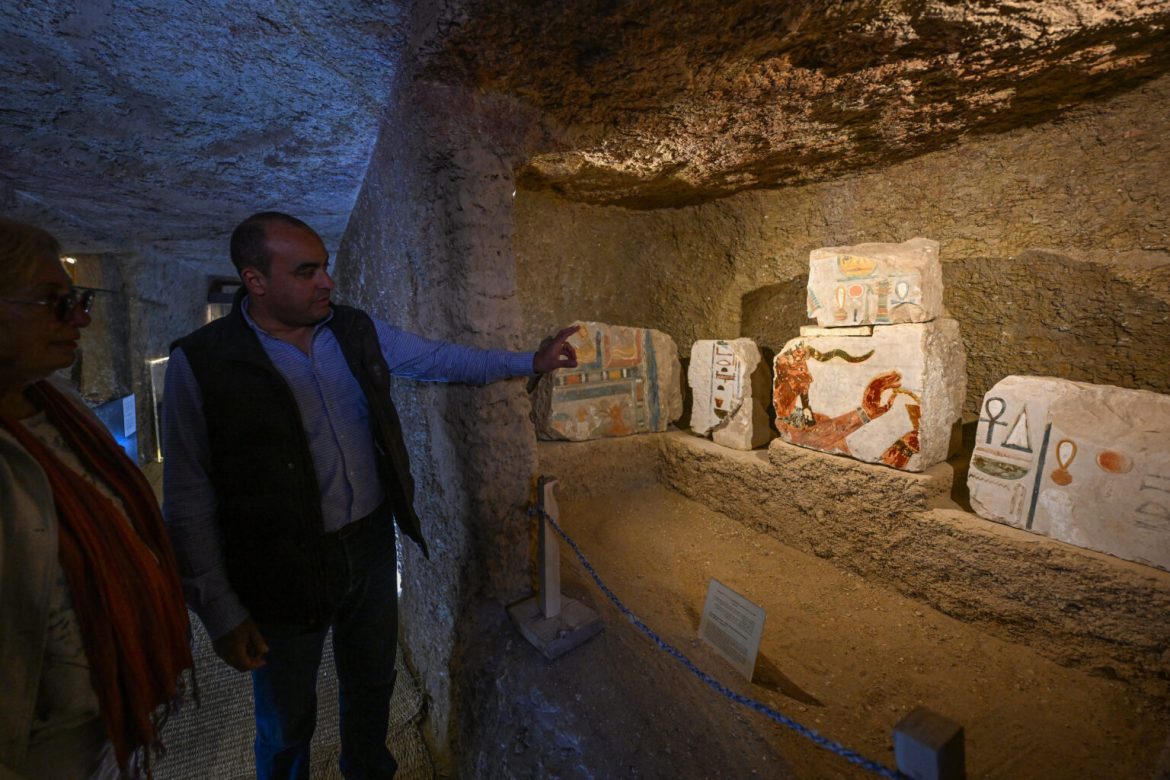CAIRO—Egypt unveiled significant archaeological discoveries in Luxor, a city renowned for its rich history and ancient monuments. Officials announced the findings on Wednesday, showcasing 4,000-year-old tombs belonging to high-ranking officials and a collection of artwork from the era of Queen Hatshepsut. These artifacts were excavated from the Deir al-Bahari area within the necropolis of Thebes.
This excavation began three years ago, focusing on the Deir al-Bahari region. The efforts led to the discovery of several well-preserved tombs. Among the findings are the tombs of prominent figures, including individuals believed to have served in significant administrative roles during their time. The artifacts include intricate artwork and other objects that provide insights into the artistic and cultural practices of the period.
The site of Deir al-Bahari is famous for housing the mortuary temple of Queen Hatshepsut, one of Egypt’s notable female pharaohs. The newly found artwork reflects the artistic style prevalent during her reign. The artworks include depictions of religious rituals, scenes from daily life, and representations of various deities worshipped at the time. These discoveries are expected to enhance understanding of the social and religious aspects of ancient Egyptian society.
Archaeologists involved in the excavation emphasized the importance of these discoveries. They believe that the findings will contribute significantly to the study of ancient Egyptian history. The detailed documentation and preservation of these relics are vital for ongoing research and education. Scholars and historians from around the world have shown great interest in the findings, considering them valuable additions to existing knowledge about ancient Egypt.
The unveiling event in Luxor was attended by various officials, archaeologists, and journalists. The display of the newly discovered artifacts attracted attention from the international archaeological community. The Ministry of Antiquities organized the event to highlight Egypt’s ongoing efforts to uncover and preserve its archaeological heritage. The government aims to promote its historical sites and boost tourism, which is a crucial sector for the country’s economy.
Tourism in Egypt experienced a decline due to political unrest and the global pandemic. Recent efforts to revive interest in the country’s rich cultural heritage have included investments in archaeological projects and the promotion of significant discoveries. The unveiling of these new findings aims to attract more visitors to Luxor, hoping to enhance the tourism industry’s contribution to the national economy.
Luxor, known for its temples, monuments, and Valley of the Kings, remains one of Egypt’s most visited tourist destinations. The city has been central to archaeological exploration for decades. The latest discoveries in the Deir al-Bahari area reaffirm Luxor’s significance as a center for uncovering the mysteries of ancient Egypt.

